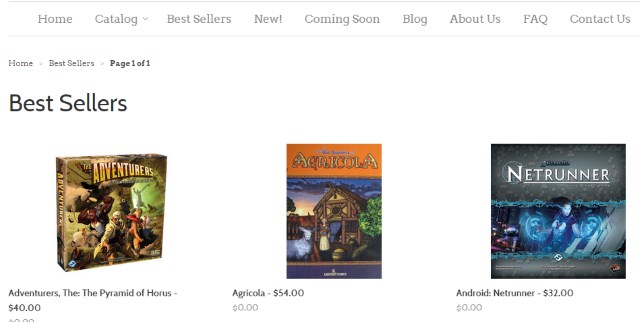

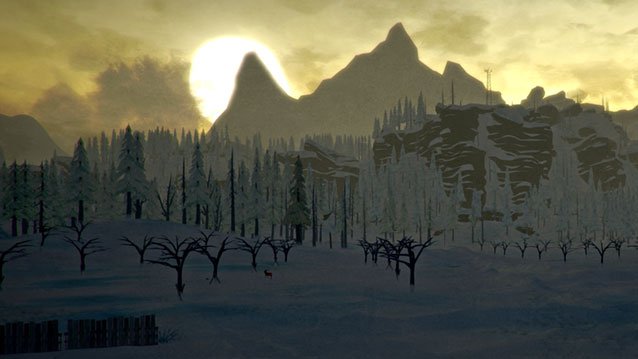
The Long Dark, an upcoming survival game from Hinterland Studios, is making waves as one of the first titles to arrive on Microsoft’s Game Preview program. It is also one of the first pure survival games on console, separating the genre from its horror roots and taking its themes of minimalist resource management to their most logical conclusion. In this post-disaster scenario players hike through an unforgiving wilderness, at odds with a passive but destructive antagonist: the weather and landscape itself.
I caught up with creative director and founder of Hinterland Studios Raphael van Lierop at E3 this year to talk to him about the exciting new developments in the future of The Long Dark, including what the process has been like as they help usher in Microsoft’s new Early Access-like indie game preview program. We also pick apart some of the inspiration and themes within the game, discussing the appeal to apocalyptic narrative. Read on!
Holly: I grew up in the Pacific Northwest so the game is very real to me in the sense that it reminds me so much of growing up in the area, all the scenarios that run through your mind should your car end up in a ditch one day just trying to make it home. On your creative team for The Long Dark is there anyone who’s had that similar background and life experience? Does the game draw on the places you or they have lived or scenarios they themselves have gone through? This takes place in Canada, as does your studio, yes?
Raphael: Yes the studio is Canadian, we are on Northern Vancouver Island in a very small town that is surrounded by wilderness, so The Long Dark is sort of our backyard, in a way. Most of us, for example I moved from Vancouver, came from a bigger city, so I think moving there was part of the inspiration for the early part of the game. I spent a lot of time walking logging roads in the backwoods, and listening to the woods and that was some of the early brainstorming. I always knew that I wanted to make a survival game, and it felt that there weren’t any games out there that were true outdoor survival, it was always more about shooting zombies.
H: That’s what fascinates me about The Long Dark because I feel that survival is becoming its own genre. We have FPS, MMO, etc, but it feels like survival for pure survival’s sake is becoming a “thing”, free of the horror subtext, which is how it’s always paired. You have folks on your staff that have worked on The Elder Scrolls series, you can see a lot of that influence in the mechanics of the game. What would you say some of the other primary influences are for The Long Dark?
R: In terms of games, Fallout 3 was a big one. I put like 150 hours into that game. If you remember, when it first came out, there was a level cap of 30 and only in the DLC did they raise that. I maxed out really quickly, and so for the majority of my first 150 hours of the game, I was wandering through the world not earning any perks or experience. But was still really compelling to me. I felt like the thing that I loved so much about it was that exploration loop, seeing something interesting on the horizon and going there and looking for stuff there. Sometimes I felt the combat almost got in the way. It wasn’t the fun part to me. The exploration, that sense of being where you weren’t supposed to be, or finding something that was abandoned.
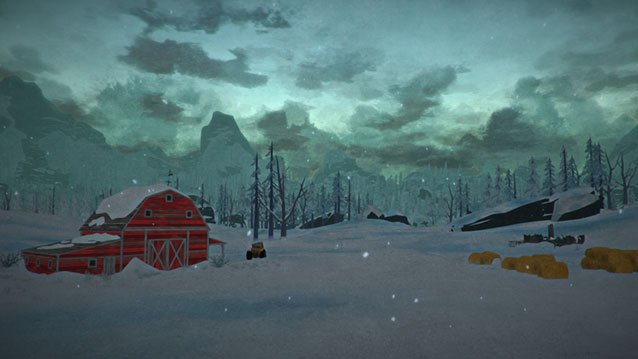
H: I really identify with that because for me a big part of Fallout 3 what made the game great was the theme of abandonment and decay…
R: Urban exploration!
H: Yes! I feel like Bethesda took another step towards enhancing that experience when Skyrim came along because of the improvements to their draw distance graphics, really ensuring that you could go anywhere on the horizon that you were inspired to see, and as a result, it’s yet another game I’ve poured hundreds of hours into.
R: Going back to what you were asking earlier, about our team, one of our members came to us after ten years at Bioware and working on Dragon Age and he’s a very hardcore hiker, so it has been great to have him on the project. He was initially drawn to The Long Dark because of the wilderness setting, and he’s been a great resource. I’ve done a lot of outdoorsy stuff but not on that scale, so I ping him all the time about how to make this experience more true to the feeling of being lost in or just traveling through the wilderness.
Returning to games, S.T.A.L.K.E.R. was a big one, in fact one of the most hardcore survival mode in the game is named Stalker Mode in tribute to the game. Then there’s novels, like The Road obviously. There’s another novel called The Dog Stars by Peter Heller which is a study on psychology of isolation, so those were pretty powerful influences on the early thinking that went into the game.
In terms of survival being its own genre it’s been really interesting to work on The Long Dark in that our starting point was we wanted to create [an exploration game]. To me the most interesting part of Fallout 3 was exploration, so after playing it a lot I wondered if you could make a game that was only that, where combat was incidental and the environment is the challenge itself. So that’s where all the mechanics of the game emerged from, how to turn Mother Nature into a...not necessarily an adversary but sort of a neutral threat. She doesn’t care whether you live or die.
H: One literary theme that I love is the indifference of nature to human suffering.
R: Yes! That’s exactly what this game is about.
H: Like, it ain’t out to get you but it ain’t out to help you either.
R: That is terrifying for people. I’m always amazed because people say, “Oh the game’s really spooky, it feels like a horror game,”. It’s not a horror game, it’s a vulnerability fantasy. The player realizes how weak we really are, and that’s what resonates with them. they like the fact that A. the game doesn’t hold their hand, B. it doesn’t pull any punches and C. their successes are *their* successes. We don’t give you anything, so if you survive five days or fifty days, it’s because *you* figured it out. I think what works well in this game is the sense that things never get too comfortable.
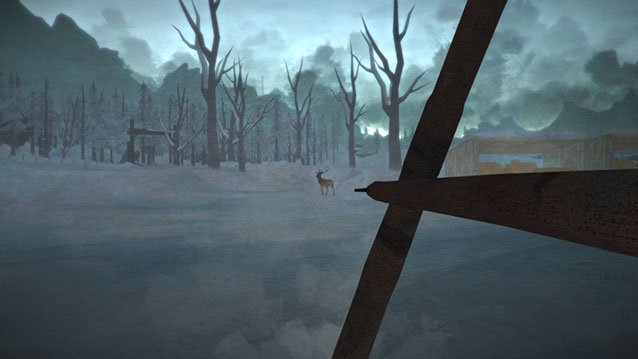
H: Yes I would agree. Having played the game in Early Access, I would say that just because you’ve survived five days in the game, that doesn’t mean you’ve got it all figured out and suddenly things start to get easier. Every single day is a struggle.
R: Even every single hour. One of my favorite quotes about the game from one of our community members was along the lines of, most often what kills you in The Long Dark is yourself. At some point you made a decision that maybe didn’t have immediate ramifications but down the road, it did. You can almost draw a line back to that one place where you made a bad decision, like you got greedy and carried too much stuff in your pack and so you sprained your ankle and a wolf got you, or whatever.
H: One thing that killed me many times in the game was coming to an actual fork in the paths I could take; often I was given the choice of going this way or that, and likely one of those paths would result in my death, but it’s gonna take a lot of energy and effort to explore that so I have to make that judgment call on which is more likely to result in food or shelter. I don’t have the luxury of checking both. The last time I played, was after one of the updates where you guys were trying to adjust the frequency of animal encounters, and so I found an abandoned power station and went inside, where I was very quickly mauled by a wolf.
R: That wolf actually has its own name and Twitter account. It’s funny how Fluffy came about; back in the day we were only testing with our Kickstarter supporters, long before we came to Early Access with it. We had people exploring and when we first brought in the dam [to the game], people loved finding a built up urban-feeling space...but they got so comfortable in it. Too comfortable. I was like, “You should not feel comfortable here”, so we threw in the wolf almost as a joke, as a lark to mix things up a bit. I don’t think we ever thought we’d leave it in there, it was more of a “just because” kind of thing, and people ended up loving it. They thought it was awesome because they’d gotten so used to going into that space and looting it without any associated risk, and suddenly they have to contend with this chance he’ll spawn.
So our community named it Fluffy, and then that took off. Fluffy has his own Twitter account, and we left him in the game even though he surprises and kills people. And sometimes that’s frustrating for them but…
H: Eh, you gotta learn some time!
R: That’s right!
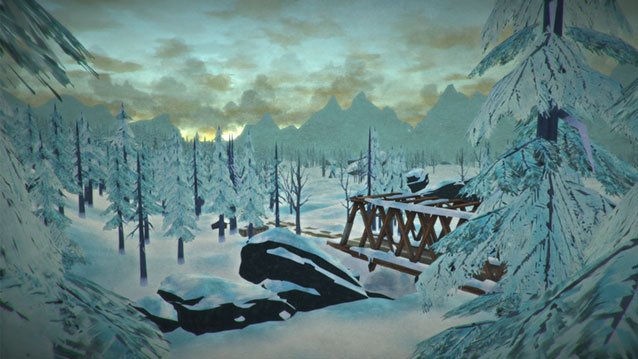
H: So you guys came from Early Access on Steam and now you’re on Xbox One; what is the status of the Xbox One version, is it in a completed state?
R: Actually what we’re doing is exactly what you’ll see in Early Access on Steam. We’re in Game Preview, which is the new program that Microsoft is doing; as they mentioned at the keynote, we and Elite Dangerous are the two games that were launched at announcement.
H: That’s very exciting, to be a part of what Microsoft is doing in trying to mirror somewhat Steam’s Early Access program, better supporting indie titles by giving us a window into the progress in developing one. I find it intriguing.
R: Yes, they actually chose us! It’s a testament to how solid our community is on Steam, and how we’ve run a really tight ship in terms of the quality of the game, the fact that it isn’t buggy, it doesn’t crash, there’s already a lot of good content there.
H: I think you guys have improved the integrity of the Early Access program on Steam on the merit of being a part of it, because you see so many games that are obviously an exploitative, shameless rip off, and I don’t want to knock the indie developers that are out there testing the waters and getting a feel for who they are as creators, but at the same time, I’ve been let down and disappointed. There was a dinosaur game I really wanted to play, The Stomping Land, which was abandoned, another game, Towns, was abandoned too.
R: Honestly I can understand from the developers point of view also, in that my team is made up entirely of veterans, we’ve all been making games for ten or fifteen years. If you are just getting into games development now, the bar for entry is very low. Because the survival genre is so hot right now, you can sort of cobble something together, put it out there...and suddenly you have all these sales and all this money and you don’t even know what to do with it. And unfortunately these teams don’t have the maturity as developers to be able to carry it forward. I think sometimes they do just get in over their heads. We’ve been pretty methodical about how we build a game and the choices we make, to ensure it makes sense with the size of the team we have, so that we don’t end up in a situation where we have a game that is bigger than what we can support, while maintaining a quality level that we can be proud of.
Microsoft approached us to be a part of the Game Preview Program and it’s essentially exactly the same game. When they announced it on Monday [June 15, 2015] later that afternoon it went live on Xbox One so you can actually buy the game right now. It has a one hour free trial, which is part of their program. It’s a curated project, it’s not open.

H: In that sense, they have a one-up on Steam, in terms of maintaining quality.
R: I think it’s just two different philosophies. Sometimes, you see a diamond in the rough on Steam that otherwise would never have been found if the platform were not open. But as you mentioned it does open the system to possible abuses. Steam’s philosophy has always been to be kind of hands off, while Microsoft has a console, and consoles have always been highly curated experiences.
H: Out of necessity! They have to be.
R: Right, so we had to go through a proper certification process to make sure the game will work perfectly on the console, Microsoft is very strict about that. At the same time, it’s a great acknowledgment that Microsoft sees the value in the community development model; build the community, get your feedback, improve the game, but do so organically, as opposed to the traditional model where you spend a lot of money on a game, throw more money at marketing, and then just hope it works out.
H: So, I haven’t played the game in awhile, not since Fluffy got me. If I were to fire it up right now, what changes would I find have taken place since then? All that was available at the time was open play Sandbox Mode, no Story Mode.
R: Story Mode is coming soon, it’ll be episodic and the first chapter should be coming out this year. It’s still sandbox, which is currently 25 square kilometers, we have three major regions, each with their own take on the survival theme. They’re joined by travel regions and it is a seamless world. We added bow hunting recently and in the true spirit of the game you have to make everything from scratch yourself, so you have to harvest the wood, you have to cure it til it’s ready to be used, you have to find all the supplies you’ll need to make it. The earlier part of the game is really about exploration and harvesting the manmade things that are left in the world, and then if you survive long enough you transition into a place where now you have to be more self sufficient. And really that’s the ultimate goal, to be more self sufficient, make your own clothes, getting food by hunting and what not.
H: I appreciate how tedious that is, because really that’s the reality of it, these are the compromises you’d be making internally in that situation. The expenditure of calories, I really like that as a device. It reminds me of the health and mana bars that have become such a staple of RPGs, but in terms of real life.
R: It’s just a very easily understandable measurement for people, right? And I think everybody understands that calories equals energy, doing things takes energy, higher levels of activity cost more energy than say, sitting still. That becomes a part of the economy of the game, the trade off they have to make. It drives the search for food and supplies, the burning of your calories are affected by other things like how cold you are, so you have to think about how to maintain your warmth, through your clothing or shelter or fires. All the systems work together to create that neutral threat of nature where it’s almost up to chance whether you survive or not. What I love about the game is that sense of contrast between how beautiful and immersive the world can be while having this underlying awareness that the world is slowly killing you. When I look back at some of the feedback we’ve seen from our community, I’m blown away by some of the ways that people will describe their deaths. They’ll write journal entries that go day by day, blow by blow what they did...to me that is the purest form of player story. It’s very exciting to see. I’m equally excited to think about bringing the Story Mode in, because it gives us an opportunity to bring in our author’s take on the story of The Long Dark.
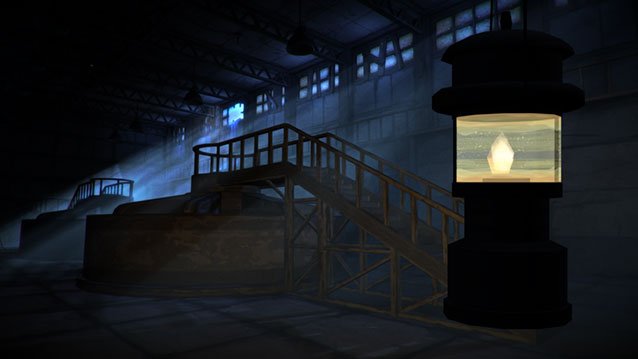
H: So, tell me more about that, you said you’re planning on seasons, how many seasons will there be?
R: We’re gonna launch Season 1 and there will be a number of episodes. Right now the plan is to have eight. And then with any luck, we’d like to do future seasons and the current thinking is that each season is a literal season of the year, so Season 2 would be spring, etc. That way we can change the mechanics, get you out of the snow.
H: Oh that’d be so fun, like changing things up in terms of your survival tactics, for instance in the summer you’re having to manage your body heat and hydration, maybe.
R: Yeah hydration becomes an issue. As you can imagine in a world with this post disaster scenario, there’s no functional technology and people are more of a threat, but there’s a lot of stuff there for the picking. Later on in the game it’ll be harder to find resources, wildlife will be more active (since they will be outside of a winter context), etc etc. There’s a lot of things we can do just by tuning those mechanics to fit each season, and thematically you can follow that arc. Our grand design would be to do like a full year of The Long Dark.
H: So what can you tell about the story in terms of the greater picture? We do know that there’s been some sort of disaster-like event that has created this post apocalyptic scenario, but will we see any resolution on that? Is that something we get to learn more about in the process of the game’s overarching narrative?
R: Yes, absolutely.
H: And how is that delivered, exactly? Obviously you take a lot of inspiration from games that make heavy use of chat logs and journals left behind; will that type of storytelling be coming into play?
R: There will be some environmental storytelling that comes through the art and atmospheric design, and there will be collectibles and things left behind that you can use to learn more about your surroundings. There will be other survivors that you encounter along the way and that will be in Story Mode. And then we’ll have our version of a mission structure, with narrative underpinnings and what not. I kind of compare it to Fallout 3 in that you can wander freely in a sandbox environment but then also complete missions and follow through with their objectives. We’re trying to put our own slant on it but I think when it comes to a story-driven experience, we need to take advantage of what people already understand in terms of how storytelling works in an open world environment. We’re a small team so we have to pick our battles in what we choose to animate.
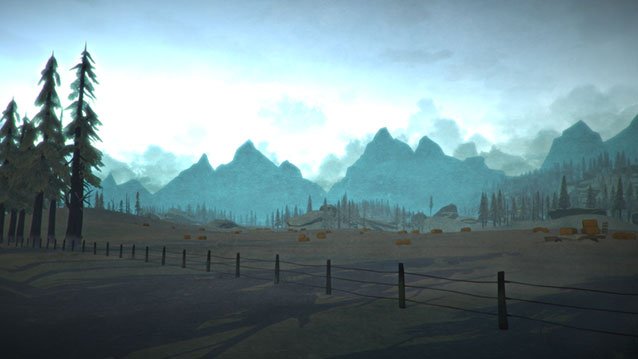
H: In that sense you have your own little survival game going on within your team, working on these limited resources and trying not to misstep within those limitations. I ask this of many Kickstarter funded studios in interviews, do you find that working outside the confines of a publisher, with diminished resources but greater creative control, to help or hinder the creative process?
R: It always helps the creative process to have some constraints.
H: As they say, necessity is the mother of invention.
R: Absolutely. You’re forced to find really creative solutions to things which is where you tend to discover the unexpected.
H: It seems to me that if you’re making a game that places some emphasis on minimalism, having a similarly restrictive scenario behind the scenes would almost enhance the process, that the two would almost play off of each other.
R: It does and obviously where we’re located does as well. I think ultimately what we’re trying to do is create a world that is compelling and can stand in its own right, based on the art style, the atmosphere, the feeling you have just moving through it. And then as we start rolling out the Story Mode and sharing more of the background information, I hope that people will really start to see the true identity of The Long Dark as a game. A lot of people have seen the Sandbox Mode and I think a lot of them think that’s the entirety of the game. But the Sandbox Mode is really only the tip of the iceberg. There’s a lot more there.
H: So was there a reason you decided to keep a separate Sandbox Mode? Were there hazards to keeping that open of a world in the story mode context?
R: We split them up when we decided to go to Early Access. We didn’t want to ruin the experience by giving the audience a story that wasn’t final or complete. It was very much a gradual decision that we came to once we took stock of Early Access; we asked ourselves, is there an opportunity for us there, is there something that would work for us that would be beneficial to the game, and we thought well, the game is getting bigger and bigger, and it’s a lot of statistics and data, thousands of tune-ables under the hood that make the game what it is, and a lot of getting that right depends on having a feedback from a lot of people. We also knew that our Kickstarter audience, as much as we loved them, was still limited and we wanted to open it up to get more data, essentially. But we didn’t want to ruin that story experience for people so we said, let’s just make a sandbox which will show off the mechanics of the game and the game world, that we can then use to also fundamentally tune the core of the gameplay, which will carry over into Story Mode. That way Story Mode can continue on its own in secret, and then we can reveal it when we’re ready to reveal, when people can have the best experience possible. There are so many times in the Sandbox Mode where I’ve wanted to take things from Story Mode and put them in there to make the world feel more alive and to show you the true identity of The Long Dark, but I’ve been holding back because I want the story to have the maximum impact when it first comes out.
I don’t think we had any real expectations of how Early Access was gonna go for us, we have always looked at our game as what it really is, which is an artistic survival game, it’s really not a mainstream experience at all. The fact that we’re at E3 is kind of weird, because we’re not a showfloor kind of game. We recognize, as we’re sitting here under this Halo 5 trailer [on the Microsoft E3 show floor] pumping all day, that we’re a very quiet game. The Long Dark is the first survival game on the console, and it’s amazing to watch and discover an ecosystem of players that grew up independently of Steam, who haven’t been exposed to this genre yet.. We have almost a scientific curiosity around how they will respond to it. I can tell that some people really don’t get it, others don’t get it at first and then they get drawn into it and are like “Wow this is totally different from what I expected.” But, you’re not gonna get that in five minutes. It takes a half hour, an hour.
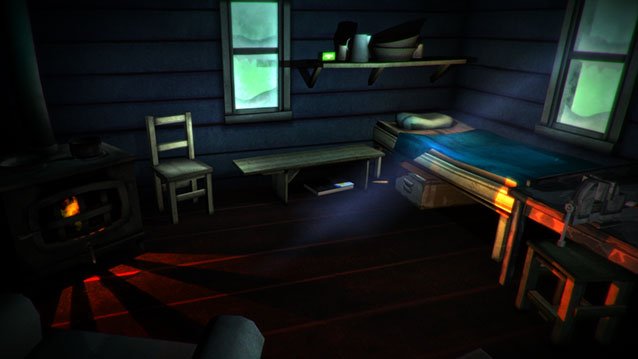
H: Yes it strikes me that this atmosphere isn’t very conducive to that, though I imagine the exposure is good.
R: Yes we’re very happy with that, we’re thrilled that Microsoft asked us to be a part of Game Preview. They’ve been great to us so far. We love that we can bring the game to players in this model. We haven’t given up any of our independence. It’s only been a benefit to us. So far our experience with them has been super positive and we like the fact that we’re pioneering this program. They’ve been looking to us to give them feedback on how things are going. You always pay a little bit of a cost to be a pioneer (if we can call ourselves that) because nothing is set up yet, everybody’s learning as they go along. We’re trying to educate people but the infrastructure isn’t there yet. I think what drew us to the program was the idea of being first at this, one of the first on Game Preview, and the first survival game on console. Whether it’s a sales success or not for us I don’t know yet, but just being first falls in line with the exploration that we’re trying to do...it all fits together: the game, the studio, the risks that we take.
H: So you guys are taking a big risk here, leading the way through uncharted territory in that sense. Do feel any sense of responsibility to help smaller or similarly sized studios through this process as kind of a leader and example?
R: We love to help and we already support a lot of studios that are in Early Access, because they’ve seen we’ve had success with it and they want to know how we’ve done it. We’d love to be able to do the same for people on console. Microsoft is very committed to the idea and they want to make it as good as they can make it. It’s been very refreshing. You think of Microsoft as being this conservative entity, but the people that we’re working with there are aiming for quality. They understand that it comes down to picking the right developers and giving them the tools they need, supporting them when they need to but also getting out of the way as necessary. They’re really good at that. When they first approached us before Christmas, it took about five months of talking before I said yes. I was really concerned about the idea of working with this huge entity when we’re a tiny little studio, I didn’t want to lose any of our freedom. It’s a testament to how good they’ve been that we’re here today.
H: Hearing that, this feels like less of a token effort to compete with Steam and Sony.
R: I can tell you that I’ve been pulled into meetings with very high level executives over at Microsoft who are taking a direct interest in listening to how developers feel about their experience working with them. It’s been incredible to feel that dedication to pushing the boundaries.
H: Are you planning achievements for the game? What are we looking at in terms of collectibles? Do you find these to cheapen the experience you’re striving for at all?
We have achievements on Steam, but we haven’t added them yet on Xbox One because there are different rules there for how you deal with achievements. We’re holding off until we have a chance to plan it out very carefully across Story Mode and all the other things that we want to do. I think you can tell from the experience we’re curating that we’re not about just giving empty rewards to players. The achievements we have on Steam are limited mostly to “you survived X amount of days”. That’s kind of the bread and butter of it, but there are others ones that we’ve put in as a result of observing players. In a Sandbox Mode where there are no objectives, what you find is that players who invest a lot of time into it start to make their own objectives. We’ve actually pulled achievements from the community. We’ve seen people say, “Well I’m gonna see if I can survive outside for three nights without using a fire.” and said, “OK let’s put that in there then.”
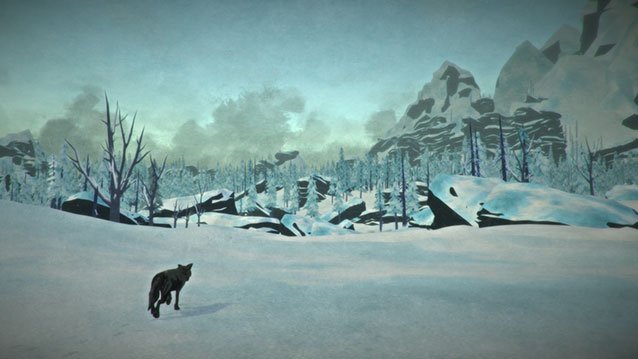
H: Ah I see, drawing on what the audience does to earn that sense of completion or achievement.
R: Right like, “Can I use every single medicinal herb to be found in the game?”, we saw it and said “Hey, let’s do that.” We’re not trying to use achievements to push a mechanic. I find it frustrating when you play a game and there’s achievements in there that seemed like they’re designed to just drive unusual game activity, things you aren’t inspired to do normally.
H: I’m a little torn on that personally because on one hand I do like to be prompted to come out of my comfort zone but at the same time, it can cheapen what they’re trying to do in the first place. Shouldn’t better game design prompt the natural use of those mechanics? If you want them to do something, make it more essential or easy to adapt to?
R: Exactly. We want to reward players for the behavior that they feel is compelling. I don’t think achievements should be what drives player engagement or decision making. Often achievements become these little guideposts for people whereas to me an achievement is an acknowledgement that you've done something amazing and that you did it yourself. The game doesn’t give you anything. Everything you have is something you’ve earned.
H: One of the other games that I think is really strengthening the burgeoning, pure wilderness survival genre is The Forest, which is also out on Early Access on Steam. Have you played it or any other survival type games on there and what are your thoughts?
I’m a little drawn on talking about The Forest, I’ve met the development team and they’re really awesome people. They’re really new to the industry so I think they were surprised to discover they have an amazing hit on their hands. I think they’re working really hard to make the best game they can.
H: That’s one of the survival games I’ve been playing a bit more avidly, they’ve been putting out updates almost every month, and each update changes everything every time.
R: They’re definitely trying to fine tune it and find their way. What I’ve heard about The Forest, and other Early Access games as well is...how we measure quality as developers, and the things we try to focus on for the best possible experience for the player, can be different than how players actually measure quality, if that makes sense. I play some of these Early Access games, and I see bugs in the first three minutes that I would never ship in my game, but their communities are still really happy and have way more players than we do. So it’s been interesting. I think what we’ve come to terms with is that we have our expectations and standards that are our own and it’s probably excessive in terms of what we need to do for our community, but we’re also trying to do something that we feel proud of. It’s a great reminder that we need to pick our battles, that not every player is going to be enthusiastic about our latest update or addition. I think our success has hinged on our focus and not biting off more than we can chew.
H: All about carefully managing those resources, right?
R: Always. Watch your calories!
The Long Dark is currently in Early Access for Sandbox Mode on Steam, as well as Xbox One’s Game Preview program. Check out more about The Long Dark at the official site.

